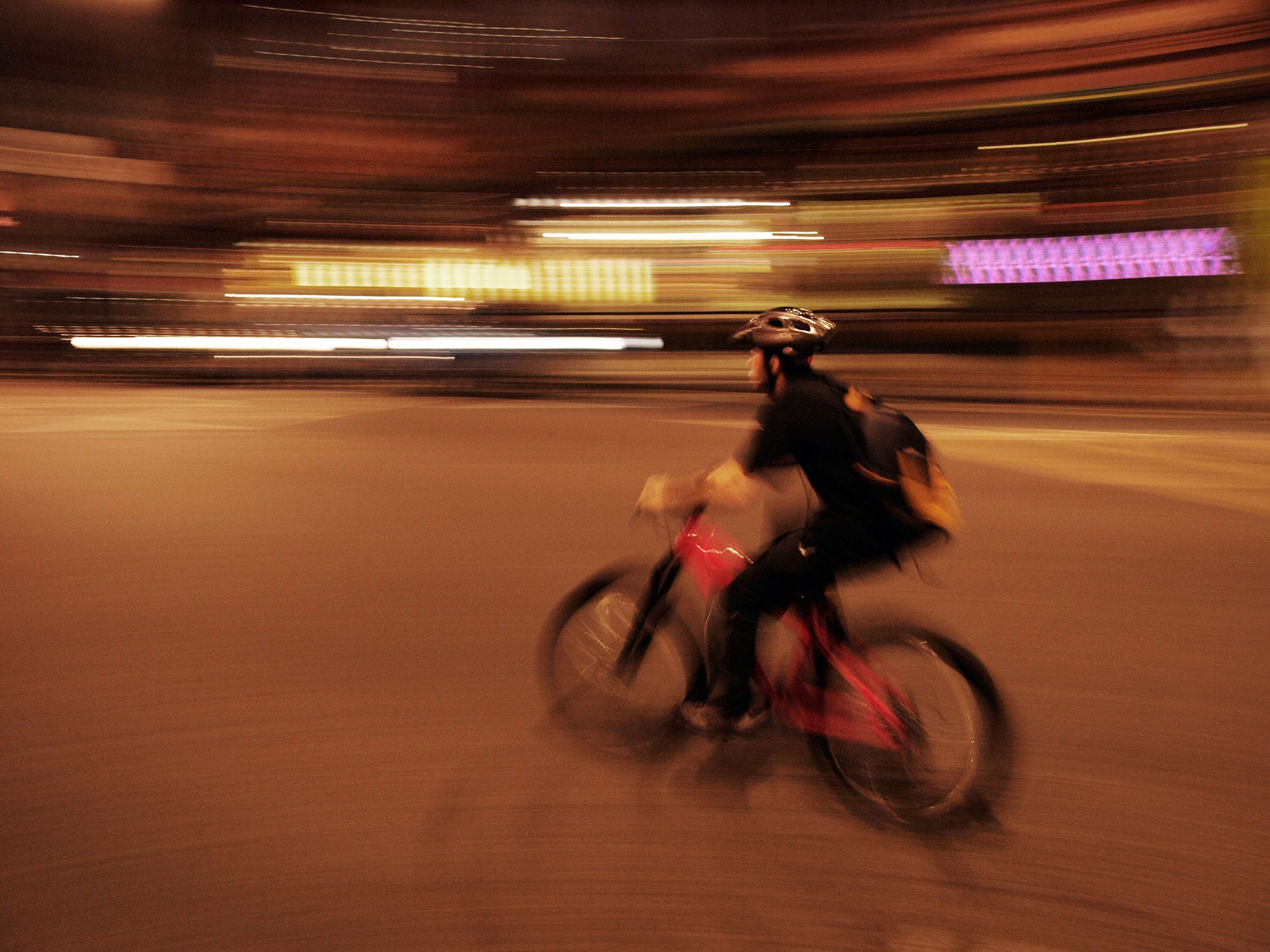Cyclogeography: Journeys of a London Bicycle Courier by Jon Day, book review
Day describes the 'sheer joy of being physically tired at the end of a day's work'

Your support helps us to tell the story
From reproductive rights to climate change to Big Tech, The Independent is on the ground when the story is developing. Whether it's investigating the financials of Elon Musk's pro-Trump PAC or producing our latest documentary, 'The A Word', which shines a light on the American women fighting for reproductive rights, we know how important it is to parse out the facts from the messaging.
At such a critical moment in US history, we need reporters on the ground. Your donation allows us to keep sending journalists to speak to both sides of the story.
The Independent is trusted by Americans across the entire political spectrum. And unlike many other quality news outlets, we choose not to lock Americans out of our reporting and analysis with paywalls. We believe quality journalism should be available to everyone, paid for by those who can afford it.
Your support makes all the difference.Jon Day's ode to the bicycle takes the reader pillion from petrol-choked city to rolling dale in eloquent prose, which at best pedals in beat to the accompanying landscape. Day, a former cycle courier, certainly romanticises the urban velocipede experience – "the exhilaration of pedalling quickly through the city, flowing between stationary cars or weaving through the lines of moving traffic" – but he's caustic about the unforgiving nature of messenger existence on the fringes of society.
Beginning with the emergence of the 19th-century flâneur, the dandy pyschogeographers who strolled the Paris streets and lost themselves in the avenues and arcades, re-imagining the city as a spectacle where "buildings could be as sublime as mountains", Day notes the absence of the bicycle, surely an ideal vehicle to "transcend the linearity of both the map and the commute". For Day the cyclist, whether urban or rural, is exploring the environment in a way a pedestrian or a driver cannot. The physical connection to the journey is paramount (gradients, road surfaces, wind, rain and which junction the police linger at to catch the red-light jumpers) in influencing the route. Where the walker is bound to the crowd by lack of pace and delineated pathway, the cyclist is freer in thought and freer physically. Cycling, argues Day, is instinctive, "making you feel a landscape rather than merely seeing it".
Day's London, via the saddle of the messenger – the explorer led into pioneer territory by the voice of a controller – becomes known to the point where the dog-eared map on the office wall is rarely consulted. It was the draw of a profession without thought that attracted him to couriering, a job that left the labourer with "the sheer joy of being physically tired at the end of a day's work". In the absence of demands on brain time, there is space to ponder.
Day describes courier life with gritty realism, recounting accidents and crashes, and the injured riders who simply fall away from the job when their limbs falter. From alleycat sprints between couriers across cities, to the history of bicycle road racing, Day writes on the often brutal relationship between bike and body.
His trip to speak with the writer Iain Sinclair is a gentler ride. Inspired by Sinclair's cynicism towards urban cycling, Day escapes London by recreating the route of the artist and cyclist Richard Long, looping around Cambridgeshire and stopping at various points to mark his journey by driving a wooden stake into the ground. After sleeping rough along the route, and returning to London via the "mothballed velodrome in the Olympic park", Day is weary of the "grit-bearded and fume-lunged" world of cycle couriering.
Day's final ride of the book is a homage to the journey Edward Thomas described in his 1913 book In Pursuit of Spring, when he rode from London to the Quantock Hills. It seems that, like Thomas, once Day had ridden far enough from the capital to lose the surging traffic and the "caravan washers" of Middle England, he found "the most perfect cycling road" on the approach to Salisbury Cathedral, skimming along a smooth tarmac road where ice "flamed and flickered" in the ditches.
Not long after this last pilgrimage, Day gave up his job cycle couriering. He got out while he could, before the grind of ferrying packages through clogged London streets destroyed his body.
Join our commenting forum
Join thought-provoking conversations, follow other Independent readers and see their replies
Comments